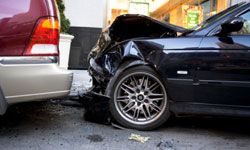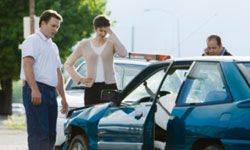Getting into a car accident is bad enough, what with the wrecked car, the possible injuries the auto insurance claim. What's worse is that in rare cases that accident was a planned, coordinated effort, and innocent drivers become the pawns in an auto insurance scam.
Fraud, including insurance scams, is the second-most burdensome financial crime in the United States, behind only tax evasion. And it's far more common than you think -- experts say that more than 20 percent of bodily injury claims and 10 percent of auto damage claims as the result of car accidents are bogus [source: Edmunds].
Advertisement
Car insurance scams victimize law-abiding drivers by creating blemished driving records, legal headaches and higher premiums. Insurance companies also end up paying out millions of dollars each year to settle claims that aren't real, but easy to float due to the after-the-fact reporting nature of car accidents. Large criminal rings and individual criminals alike see car insurance companies as too tantalizing a cash source to pass up. And that winds up as an extra $200 to $300 per year on everyone's insurance policies [source: Edmunds].
Here are five of the most common auto insurance scams -- and some practical advice on how you can do your best to avoid them.


